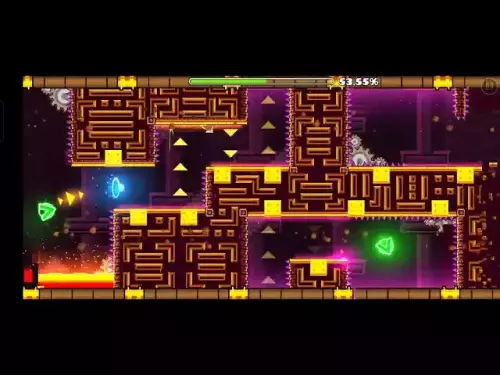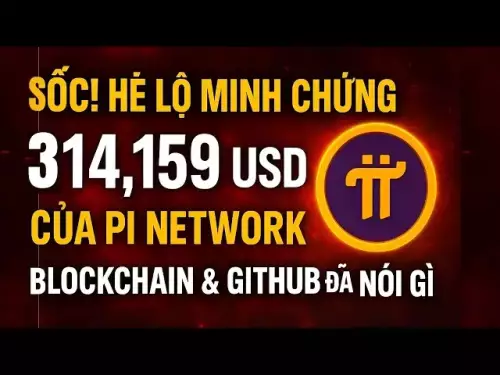-
 bitcoin
bitcoin $109547.008142 USD
0.04% -
 ethereum
ethereum $4011.838726 USD
-0.05% -
 tether
tether $1.000402 USD
-0.01% -
 xrp
xrp $2.798606 USD
0.88% -
 bnb
bnb $970.877944 USD
1.39% -
 solana
solana $202.237275 USD
-0.95% -
 usd-coin
usd-coin $0.999673 USD
0.00% -
 dogecoin
dogecoin $0.229294 USD
-1.15% -
 tron
tron $0.336370 USD
-0.45% -
 cardano
cardano $0.777260 USD
-1.66% -
 hyperliquid
hyperliquid $45.503019 USD
1.73% -
 ethena-usde
ethena-usde $1.000362 USD
0.01% -
 chainlink
chainlink $20.785303 USD
-1.10% -
 avalanche
avalanche $28.755822 USD
-0.11% -
 stellar
stellar $0.358303 USD
-0.48%
How do I manage multiple assets in Coinbase Wallet?
Coinbase Wallet supports multiple blockchains and tokens, allowing users to store, swap, and manage diverse digital assets securely across networks like Ethereum, Polygon, and Binance Smart Chain.
Sep 23, 2025 at 10:00 am

Understanding Multi-Asset Support in Coinbase Wallet
1. Coinbase Wallet allows users to store a wide variety of digital assets beyond just Bitcoin and Ethereum. Each asset exists on its own blockchain or as a token within an ecosystem, such as ERC-20 tokens on Ethereum. The wallet automatically detects supported tokens once you’ve connected your Ethereum address.
2. When you first set up the wallet, Ethereum (ETH) is enabled by default since it serves as the base layer for most decentralized applications. Other blockchains like Polygon, Binance Smart Chain, and Arbitrum can be manually added through network settings, enabling support for assets native to those chains.
3. To view all compatible tokens, navigate to the “Assets” tab where listed tokens appear based on your activity. Tokens not showing can be manually added using their contract address—a feature particularly useful for newly launched or less common tokens.
4. It’s critical to verify token contract addresses from official sources before adding them, as counterfeit tokens are prevalent and can lead to irreversible fund loss. Always cross-check with project websites or trusted community channels.
Organizing and Labeling Your Holdings
1. As the number of assets grows, organization becomes essential. While Coinbase Wallet does not offer built-in folders or grouping features, users can maintain clarity by keeping track of holdings in external spreadsheets or portfolio trackers that sync with wallet addresses.
2. Assigning custom labels to transactions enhances personal understanding. For example, labeling a transfer from a decentralized exchange helps identify the source later without confusion.
3. The transaction history screen displays every movement across all networks. Filtering by network or asset type streamlines review, especially when managing positions across multiple chains.
4. Avoid interacting with unknown dApps or approving random token contracts, as these actions may expose assets to unauthorized access even if the tokens themselves aren’t immediately visible in your balance.
Transferring and Swapping Assets Securely
1. Sending assets requires selecting the correct network and verifying the recipient address. Mistaken transfers to incompatible networks often result in permanent loss, so double-checking chain selection is mandatory before confirming.
2. Built-in swap functionality enables direct exchange between supported tokens without leaving the app. This integration pulls rates from decentralized liquidity sources, offering competitive pricing while retaining custody throughout the process.
3. Gas fees vary depending on network congestion and the complexity of the transaction. Users must hold sufficient native currency—such as ETH for Ethereum or MATIC for Polygon—to cover fees when transferring or swapping.
4. Confirmations for outgoing transactions appear both in-app and via blockchain explorers. Monitoring these ensures successful execution, particularly during periods of high latency on certain networks.
5. Never share your recovery phrase with anyone, regardless of the platform or service requesting it—even if it claims to help manage multiple assets more efficiently.
Frequently Asked Questions
Can I hide specific tokens from appearing in my wallet?Yes, long-press on any token in the asset list and select “Hide.” Hidden tokens won’t display on the main screen but remain accessible if you re-add them using the contract address.
What happens if I receive a token from an unsupported network?If the network isn’t configured in your wallet settings, the balance won’t appear. You need to add the respective network manually, including its RPC details, to view and manage those funds.
Is there a limit to how many tokens I can store?No hard limit exists, as tokens are accessed via smart contracts linked to your public address. However, clutter from numerous low-value tokens can make management difficult, so periodic cleanup is advisable.
Do NFTs appear automatically in Coinbase Wallet?Most Ethereum-based and compatible-chain NFTs show up under the “NFT” tab after receipt. If they don’t appear, ensure the collection uses standard-compliant contracts and refresh the wallet or re-import the item using its contract and ID.
Disclaimer:info@kdj.com
The information provided is not trading advice. kdj.com does not assume any responsibility for any investments made based on the information provided in this article. Cryptocurrencies are highly volatile and it is highly recommended that you invest with caution after thorough research!
If you believe that the content used on this website infringes your copyright, please contact us immediately (info@kdj.com) and we will delete it promptly.
- Whale Movements, XPL Token, and Hyperliquid: Decoding the Crypto Tides
- 2025-09-28 14:25:14
- BullZilla Roars: Presales, Ripple, and TRON in the Crypto Jungle
- 2025-09-28 14:25:14
- Nation-State Bitcoin Adoption: Samson Mow's Perspective on the 'Suddenly' Moment
- 2025-09-28 14:45:12
- XRP Price, WallStreetBets, and Rally Prediction: A New Era?
- 2025-09-28 14:45:12
- Pi Network, Sign Protocol, and the Binance Listing Buzz: What's the Deal?
- 2025-09-28 14:30:01
- BTC, HODLers, and a Potential Bull Run: A New Yorker's Take
- 2025-09-28 14:30:01
Related knowledge

How do I view smart contract interaction history in Coinbase Wallet?
Sep 24,2025 at 01:36am
Accessing Smart Contract Interaction History in Coinbase Wallet1. Open the Coinbase Wallet application on your mobile device and log in using your cre...

How do I use the token swap feature in Coinbase Wallet?
Sep 24,2025 at 05:00pm
Understanding Token Swaps in Coinbase Wallet1. The token swap feature in Coinbase Wallet enables users to exchange one cryptocurrency for another dire...

How do I participate in governance voting in Coinbase Wallet?
Sep 25,2025 at 01:55pm
Understanding Market Volatility in the Crypto Space1. Cryptocurrency markets are known for their extreme price fluctuations, often driven by sentiment...

How do I set up a custom RPC node in Coinbase Wallet?
Sep 24,2025 at 12:00pm
Understanding Custom RPC Nodes in Coinbase Wallet1. A custom RPC (Remote Procedure Call) node allows users to connect their Coinbase Wallet to a block...

How do I manage multiple assets in Coinbase Wallet?
Sep 23,2025 at 10:00am
Understanding Multi-Asset Support in Coinbase Wallet1. Coinbase Wallet allows users to store a wide variety of digital assets beyond just Bitcoin and ...

How do I connect Coinbase Wallet to a hardware wallet?
Sep 26,2025 at 02:54am
Connecting Coinbase Wallet to a Hardware Device1. Open the Coinbase Wallet app on your mobile device and ensure it is updated to the latest version. N...

How do I view smart contract interaction history in Coinbase Wallet?
Sep 24,2025 at 01:36am
Accessing Smart Contract Interaction History in Coinbase Wallet1. Open the Coinbase Wallet application on your mobile device and log in using your cre...

How do I use the token swap feature in Coinbase Wallet?
Sep 24,2025 at 05:00pm
Understanding Token Swaps in Coinbase Wallet1. The token swap feature in Coinbase Wallet enables users to exchange one cryptocurrency for another dire...

How do I participate in governance voting in Coinbase Wallet?
Sep 25,2025 at 01:55pm
Understanding Market Volatility in the Crypto Space1. Cryptocurrency markets are known for their extreme price fluctuations, often driven by sentiment...

How do I set up a custom RPC node in Coinbase Wallet?
Sep 24,2025 at 12:00pm
Understanding Custom RPC Nodes in Coinbase Wallet1. A custom RPC (Remote Procedure Call) node allows users to connect their Coinbase Wallet to a block...

How do I manage multiple assets in Coinbase Wallet?
Sep 23,2025 at 10:00am
Understanding Multi-Asset Support in Coinbase Wallet1. Coinbase Wallet allows users to store a wide variety of digital assets beyond just Bitcoin and ...

How do I connect Coinbase Wallet to a hardware wallet?
Sep 26,2025 at 02:54am
Connecting Coinbase Wallet to a Hardware Device1. Open the Coinbase Wallet app on your mobile device and ensure it is updated to the latest version. N...
See all articles










































































